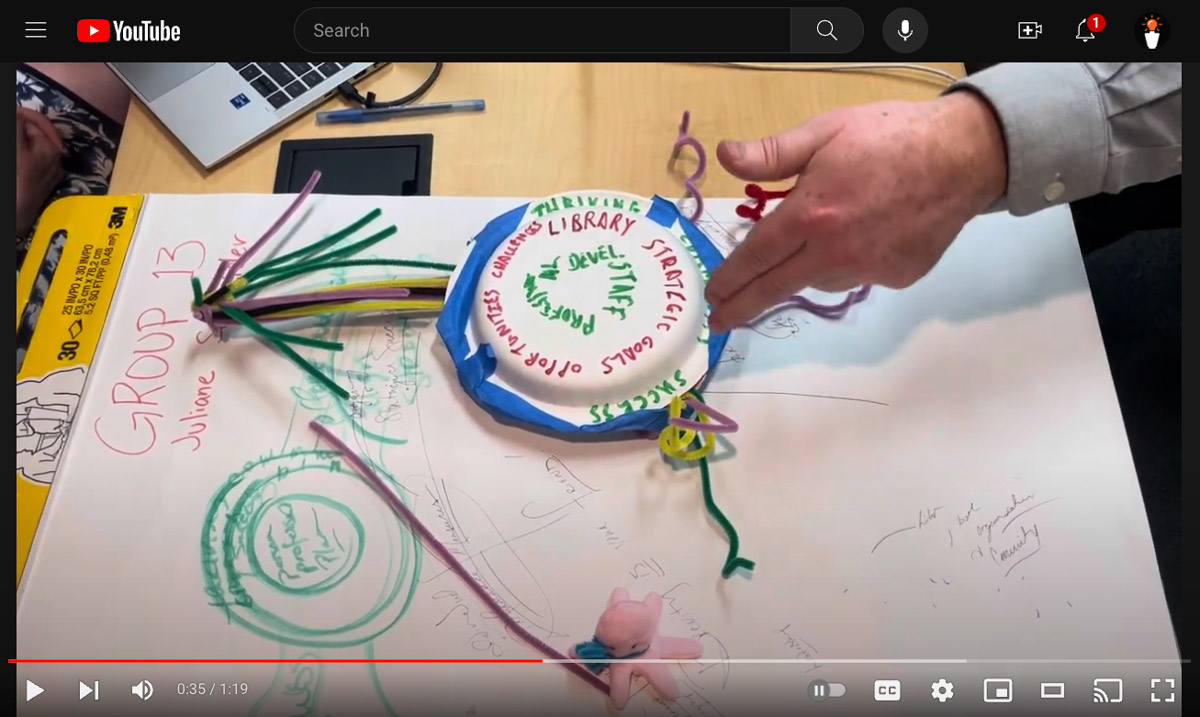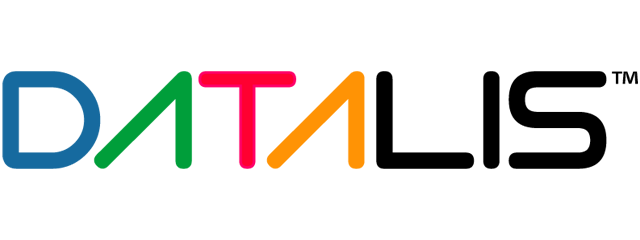Harmonizing Professional Growth with Strategic Library Success
Cultivating a Culture of Skill Development Aligned with Community and Organizational Goals
In an insightful presentation, the team tackled the challenge of fostering a culture within libraries that not only values and rewards skill development but also intentionally connects personal and professional growth to the strategic success of the organization and the broader community it serves.
How might we help library leaders, staff, and community partners foment culture change that values and rewards skill development and that intentionally ties personal professional development to organizational strategic success.
Core Components of the Proposal:
1. Addressing Disparate Needs: Recognizing the varied needs and aspirations of community members, library staff, and leaders, the team illustrated these differences through a metaphorical representation reminiscent of a banjo with unsprung strings. This imagery underscores the initial misalignment between individual objectives and the collective mission of the library and its community.
2. A Three-Layered Matrix of Success: At the heart of their solution is a conceptual matrix consisting of three concentric circles. The outermost ring represents the thriving community and its success, encapsulating the broader objectives that the library seeks to contribute towards. The middle ring focuses on the library’s strategic goals, defining the organizational objectives that guide its operations and services. At the center lies the library staff’s professional development, highlighting the importance of individual skill enhancement and personal growth.
3. Cultural Shift Towards Alignment: The team emphasized the need for a cultural transformation within libraries to bridge the gap between these layers. By fostering an environment that actively links staff professional development to the library’s strategic goals, and in turn, to the community’s success, the proposal envisions a harmonized approach where individual achievements and organizational objectives are interconnected.
4. Aligned Action and Goals: The envisioned outcome of this cultural change is a scenario where the disparate needs and goals of all stakeholders are brought into alignment. This alignment does not imply uniformity but rather a synergistic relationship where personal growth supports organizational strategy, which in turn, advances community well-being.

This team’s presentation offers a compelling vision for libraries seeking to create a culture that celebrates skill development while aligning it with the strategic success of the organization and the needs of the community. By proposing a framework that integrates individual professional development within the broader context of organizational and community objectives, the team outlines a path towards creating a more cohesive, strategic, and supportive library environment. This approach not only enhances the professional satisfaction of library staff but also ensures that the library remains a vital, responsive, and integral part of its community.
Team 13 Members
Thanks to these project team members for their collaboration with DATALIS and their contributions towards innovating professional development.
- Juliane Schneider
- Steve Mandeville-Gamble
- Rachel Frick
Evaluate This Project
Please review the story and answer the five questions based on your knowledge, experience, and perspective. Your feedback will help us to innovate professional education that impacts recruitment, growth, and retention.
Implementation Roadmap
Phase 1: Assessment and Alignment
- Conduct Needs Assessment
- Action: Evaluate the current alignment between staff professional development, organizational strategic goals, and community needs.
- Steps:
- Survey library staff to identify existing skills, professional development interests, and perceived gaps.
- Engage community stakeholders to understand their expectations and needs from the library.
- Review the library’s strategic plan to identify key objectives and areas where staff development can contribute.
- Develop a Three-Layered Success Matrix
- Action: Create a visual framework illustrating the connection between staff development, organizational goals, and community success.
- Steps:
- Design concentric circles representing:
- Innermost circle: Staff professional development.
- Middle circle: Library’s strategic goals.
- Outermost circle: Community success.
- Use this matrix to identify and communicate how individual roles and development plans contribute to broader objectives.
- Design concentric circles representing:
Phase 2: Cultural Transformation
- Promote a Culture of Continuous Learning
- Action: Encourage ongoing skill development and learning among library staff.
- Steps:
- Implement regular workshops, seminars, and training sessions aligned with strategic goals.
- Provide access to professional development resources and opportunities.
- Recognize and reward staff who actively engage in skill development.
- Facilitate Open Communication
- Action: Establish channels for transparent communication between staff, leadership, and community partners.
- Steps:
- Hold regular meetings to discuss progress, challenges, and opportunities related to professional development and strategic initiatives.
- Create platforms for staff to share insights and feedback on aligning their growth with organizational goals.
Phase 3: Implementation and Integration
- Align Professional Development with Strategic Goals
- Action: Integrate individual development plans with the library’s strategic objectives.
- Steps:
- Collaborate with staff to create personalized development plans that support both personal growth and organizational success.
- Ensure that professional development activities are directly linked to achieving strategic goals and meeting community needs.
- Engage Community Partners
- Action: Involve community stakeholders in the development and evaluation of library services.
- Steps:
- Form advisory groups with community members to provide input on library initiatives.
- Collaborate with local organizations to align library services with community priorities.
Phase 4: Evaluation and Continuous Improvement
- Monitor and Evaluate Progress
- Action: Regularly assess the effectiveness of the implemented strategies.
- Steps:
- Collect data on staff participation in professional development and its impact on performance.
- Evaluate the library’s progress toward strategic goals and community impact.
- Gather feedback from staff and community partners to identify areas for improvement.
- Refine Strategies Based on Feedback
- Action: Continuously improve the alignment between professional development, organizational goals, and community needs.
- Steps:
- Adjust professional development programs based on evaluation findings.
- Update the success matrix to reflect evolving objectives and priorities.
- Foster an adaptive culture that embraces change and values ongoing learning.
Summary
To implement Team 13’s proposal, libraries should assess and align staff development with organizational and community goals, promote a culture of continuous learning, and integrate professional growth with strategic objectives. Engaging community partners and establishing open communication channels are essential. Regular evaluation and refinement will ensure sustained alignment and success.
